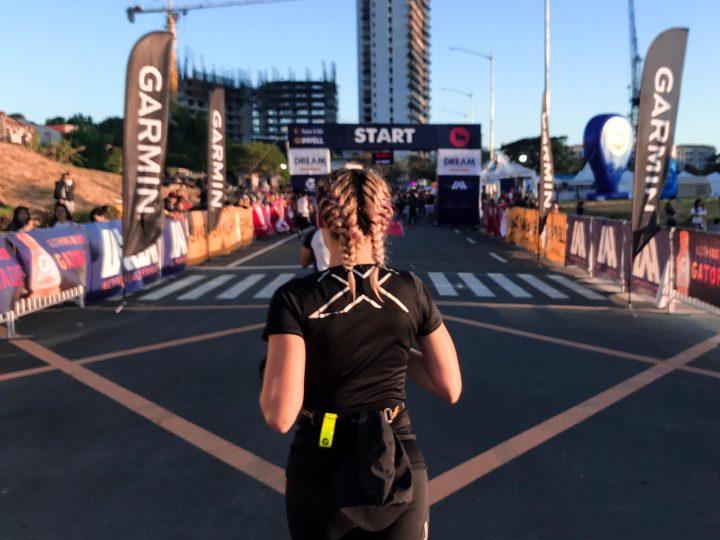
I was looking forward to racing a whole lot, this year.
After finishing a marathon in the earlier part of 2019, racing had been put on hold on my calendar for a while because other matters required my full attention. “Come 2020 I’m going to race more,” was the promise I made. A promise made not just by me, but surely by a lot of other people who make up the fitness community.
With 2020 came the hope of once again being able to feel the intoxicating sense of accomplishment that came after crossing the finish line. Once the training programs were committed to memory and the reminders to train set, every day felt as if it were filled with renewed purpose. It was going to be a year for more progress and new achievements, we all said.
That is until the novel coronavirus disease (COVID-19) began spreading – and quickly, to say the least.
There are no guarantees
As the threat of the deadly disease spreading to the Philippines became more evident and imminent, so did the need for immediate responses, both from the private and public sectors. From the government, people called for organized and widespread implementation of preventive measures. From the private sector, most notably the tourism and entertainment industries, came the limiting of flights and event cancelations and postponements.
This would also come to affect other industries that fall under leisure and recreation, like sports and fitness. But up until a certain point, the fitness community felt untouchable, presumably empowered by the urging of health professionals for people to improve their physical well-being through exercise, to help fight off the virus
If you were healthy, you had the least likelihood of contracting the novel coronavirus. And if you made sure to maintain the company of healthy individuals, how high can the risk be, right? And so, falling ill due to the coronavirus remained an improbability to fitness enthusiasts – people continued to go outdoors, to fitness studios or gyms.
However, being physically fit was never an absolute guarantee that you won’t be putting yours and others’ lives at risk when you go out in public spaces to train.
The risks not worth taking
Even though social distancing was practiced, cases still shot up. Hospital emergency rooms started getting overwhelmed with patients seeking consultation. The need to put in place strict measures to ‘flatten the curve’ became apparent to the government. And so, on March 16, 2020, President Rodrigo Duterte announced that the entire island of Luzon was to be placed under lockdown.
A week into it, while the government was scrambling to develop and refine standard implementing guidelines, some members of the fitness community still dared to leave their houses to train. As if in doing so, they failed to recognize the fact that this put at risk not just their own safety, but even that of the people closest to them.
What a lot of people don’t know is that the scariest part of the coronavirus disease isn’t really in the quickness of its progression. What makes it truly dangerous is how insidious the virus is.
Come the third week of lockdown, I start to forget what it feels like to not live in constant paranoia for my family’s and my own health. If 1 in 4 people can be carriers but show absolutely no known symptoms of COVID-19, how could you not be? I could be chatting with my neighbor one day and in a hospital bed on another.
Health experts say that staying healthy can help ward off the contagion, but when some of the most physically fit people you know test positive for it, how could I be so sure that my bodily defenses are enough to fend it off?
But apart from those, I stay at home because if my contracting the virus and seeking consultation for it increases the exposure of frontliners; if I could be one less burden on already over-capacitated hospitals; or if I can simply be a more responsible person and protect the more vulnerable members of society from the virus, then I will avoid the risk of going outdoors at all costs.
The mileage isn’t worth the lives it will cost.
Heeding the call of a different race
Races and competitions are the ultimate demonstrations of the hard work of a fitness enthusiast. The challenge is exhilarating, and the victories are thrilling, as one sees for themselves with absolute clarity the progress they’ve been training to achieve.
The yearning for such feelings is understandable, given normal circumstances – a norm based on a context of reality before the time of COVID-19. But it’s here now, viciously spreading, and with it comes a drastic shift in our norm. One where a handshake or a high-five could potentially land you or a loved one on a hospital bed, fighting for your life.
Wide-spread crisis, more often than not, brings to light perennial issues in society and make their commonly overlooked presence more pronounced. The local experience of the COVID-19 crisis has, in recent days, made problems in hunger and alleged human rights abuses, to name a few, already more observable.
Following these is a call to unite and participate in a race against an enemy that has proven difficult to thwart. In this race, what we stand to lose is human dignity and lives. In this race, the key to winning isn’t with brute force to go on an all-out sprint. We win this by resisting ourselves and dismissing our selfish intentions and ground ourselves at home if you’re not needed in the frontlines, or if you’re lucky enough to have the option to do so. And if the inaction starts to get frustrating, then volunteer online or donate to relief operations. But as much as you can, stay at home, because that’s the fastest way we can get through this.
The finish line is far from sight, but that doesn’t mean it isn’t there. When we cross it, we will do so a little bit battered and beaten, but never defeated. We’ll cross it together, and maybe, even stronger and smarter.






